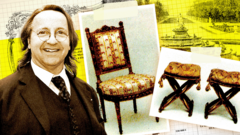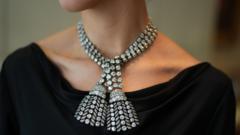In a striking case shaking the art world, Bill Pallot, a celebrated expert in 18th-century French furniture, faces serious allegations for selling counterfeit antique items to affluent buyers, including Prince Abdullah bin Khalifa Al-Thani of Qatar. Once merging his passion and career harmoniously, Pallot misled collectors and institutions with forged royal provenance, leveraging his fame to push fraudulent furniture pieces, some allegedly linked to historical figures like Marie Antoinette and Madame du Barry.
With nearly 40 years of expertise, Pallot, who authored the influential book "The Art of the Chair in 18th Century France," was a trusted name in the field until a former student raised doubts about his claims. This student, having developed a refined sensibility towards antiques, reportedly discerned the forgeries, marking the beginning of Pallot's downfall. Despite his once-coveted status in Parisian social circles, the trial could mark a stark reminder of the fragility of reputation in the highly competitive and often cutthroat antique market.
The verdict and implications of this trial could redefine trust within the antiquities community, as experts and buyers alike navigate the complexities of authenticity in art. This case not only highlights the risks of art crime but also raises questions about the systems in place to protect buyers from sophisticated deceptions in the high-stakes world of antiques.
With nearly 40 years of expertise, Pallot, who authored the influential book "The Art of the Chair in 18th Century France," was a trusted name in the field until a former student raised doubts about his claims. This student, having developed a refined sensibility towards antiques, reportedly discerned the forgeries, marking the beginning of Pallot's downfall. Despite his once-coveted status in Parisian social circles, the trial could mark a stark reminder of the fragility of reputation in the highly competitive and often cutthroat antique market.
The verdict and implications of this trial could redefine trust within the antiquities community, as experts and buyers alike navigate the complexities of authenticity in art. This case not only highlights the risks of art crime but also raises questions about the systems in place to protect buyers from sophisticated deceptions in the high-stakes world of antiques.







